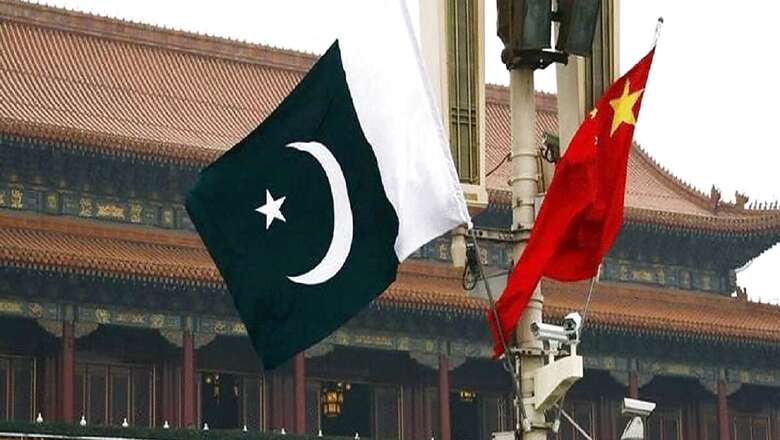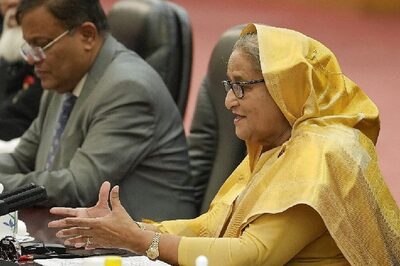
views
The 22nd of May 2021 marked the 70th anniversary of diplomatic ties between China and Pakistan that began in 1951. On this day, Pakistani PM, Imran Khan, while inaugurating the Karachi Nuclear Power Plant Unit -2 (which uses the Hualong One reactor designed by China), extolled the virtues of this friendship and the developmental prospects of the China–Pakistan Economic Corridor (CPEC). The People’s Daily carried an article with a similar triumphant tone, peppered with accounts from grateful Pakistani citizens. As the cherry on the top, President Arif Alvi reiterated the expression “deeper than the oceans, higher than the mountains and sweeter than honey” to describe the relationship. To further celebrate this day, a set of commemorative postage stamps were also released in Islamabad; one depicted the crown jewel of this all-weather partnership, the Gwadar Port. Xinhua News also released a video that heavily featured the achievements made under CPEC, very much in line with the message from President Xi Jinping.
The China-Pakistan friendship has been the cause for much discussion in India and is seen as an intense strategic challenge, which has only been intensified by the CPEC. While in media reports, the tone of this all-weather friendship revolves around economic cooperation, there is also an ever-increasing military cooperation between the two nations involving arms deals, joint exercises, and defence pacts. In this light, it is essential to understand the driving force behind this sustained bilateral relationship, particularly from China’s viewpoint, given its tumultuous history of conducting foreign policy. Why is a state such as Pakistan that constantly sits on the precipice of failure the recipient of China’s support?
In terms of external factors, one long-standing systemic explanation has been China and Pakistan’s mutual rivalry with India. Especially in the aftermath of the 1962 India-China War, political analysts claimed that China’s overriding strategic concern is to keep Pakistan independent, powerful, and confident enough to present India with a two-front threat. Moving beyond Beijing’s South Asia Policy, scholars have also situated Sino-Pakistani friendship within the larger context of Cold War politics. Pakistan was one of the first non-socialist states to diplomatically recognise the PRC and, by the 1950s, be responsive to the Chinese verbal attacks on the Americans. Even though Pakistan was a part of the Western alliance, it was seen as a weak link in the imperialist chain and a ‘potential source of contradiction within the camp.’ Later in the 1960s and 1970s, China’s fear of Soviet encirclement dictated its close ties with Pakistan, and also with the latter acting as the middle man in the 1972 US-China rapprochement. Finally, Beijing and Islamabad seemed to share the sense of being ‘misunderstood’ in the international arena, a rhetoric played by the media in both countries.
Factors for an alliance with Pakistan
While these system-level factors give important reasons, one needs to turn to domestic factors to get a more comprehensive picture of China’s Pakistan policy, especially in the current global order. Shedding its revolutionary politics of the Maoist years and reticence of the Deng Xiaoping era, China has emerged as a great power, even as a challenger to the US. Hence, China’s continued and strengthened ties with Pakistan cannot merely be explained as a function of its balancing strategy. In the China-India-Pakistan arc too, China looks like the more senior partner with Pakistan following its cue. In this context, Pakistan’s importance to China can be understood within Andrew Nathan’s ‘Four Rings of Security’ framework.
The first ring is China’s self-defined border and territorial integrity. China remains a divided country (Taiwan) even after seven decades of the establishment of the PRC. Even on the mainland, some regions and groups are not fully integrated into the political and cultural system. They have interactions across international borders—like Tibet with India, Hong Kong with the West, Xinjiang with Central Asia and Turkey, etc. China’s interest in maintaining good relations with Pakistan, which has denied support to the separatists, can be explained in this light. There is no real conflict of interest between China and Pakistan; their border was settled in 1964. Pakistan has also acted as a buffer state on China’s western borders keeping in check the spread of radical Islam in Xinjiang. China in the 1990s was able to induce Islamabad to close a market where certain Uyghur members were thought to be operating, as well as expel Uyghur students from the madrassas. Even the current reports of detention camps and internment of Uyghur Muslims haven’t generated significant criticism from the Islamic nations or their organisations.
The second ring consists of China’s relations with the neighbouring countries with which it shares either land or maritime borders. China has a uniquely challenging neighbourhood with massive countries, some with unstable regimes. Further, amongst these nations there exists huge cultural gaps and incongruent national interests. Potential rivals—Japan, India and Russia— have permanent security interests that are often averse to China’s. Others like North Korea and the Central Asian republics are weak and unstable, with risks of regime breakdown or civil disorder. In this case, Pakistan has proven to be a consistent supporter and an ally by balancing China’s main competitor in South Asia, India. Pakistan has also been an arena of Chinese experimentation in conducting peaceful foreign policy since the 1960s and is cited by China as a shining example as it expands its economic and military footprint in the rest of South Asia.
The third ring consists of the politics of six multi-state regional systems surrounding China—like South Asia, East Asia, etc.; such that China can rarely make policy with only one state in mind or without accounting for implications on relations with the US. In Pakistan’s case, China has benefitted from the presence of the US, especially as the latter has borne the costs of the ‘War on Terror’ and provided crucial aid to Pakistan, supporting different democratic and military regimes. At the same time, negative perception of the American presence within Pakistan has also helped bolster the Chinese involvement.
Finally, the fourth ring of China’s security interest consists of the rest of the world—Europe, the Middle East, Africa, South America, and others. Here, China is pursuing energy resources, commodities and investment, and diplomatic support on various issues. Pakistan has played a role in China’s rapprochement with the US and its entry into international organisations like the World Bank. The relationship has been pertinent to the development of Beijing’s links with the Middle Eastern states as well. Currently, China’s quest for energy security (by overcoming reliance on the Malacca Strait) under its Belt and Road Initiative has placed Pakistan at the centre of its geo-economic and geopolitical strategy. Furthermore, despite China’s weakness in building military alliances vis-à-vis the US, Pakistan has emerged as a ready partner, as is visible with the recent defence pact to counter the QUAD and cooperation over Afghanistan.
In conclusion, China’s pursuit of good relations with Pakistan goes much beyond the territorial dispute with India. Though there is local opposition to Chinese projects under the BRI, amongst the political elites and military leaders, China has a sanctified status. Hence, while the relationship is bound to continue on good terms in the future, there are several pitfalls like Pakistan’s economic weakness, political instability, and provincial opposition. Further, its utility to China as a diplomatic conduit has been limited as much by Pakistan’s falling stature and international censure against state-sponsored terrorism as by the very different nature of China’s conflict with the US and its allies. All these factors and the resulting asymmetry of state power between China and Pakistan have led commentators to proclaim that Pakistan is on its way to becoming a satellite state for China. But the approach presented above complicates the picture by revealing the defensive nature of China’s policy borne out of geostrategic vulnerability.
This article was first published on ORF.
Read all the Latest News, Breaking News and Coronavirus News here.




















Comments
0 comment